For a passionate Master, the forge is not just a place of work, but a creative workshop, where he spends a lot of time, and where real masterpieces are born. The forge with her own hands is a tool for turning the artistic idea into a forged product.
Key points to create forge
According to the requirements of fire safety, the forge must be separate from the residential premises and have an area of \u200b\u200bat least 16 m², if we are talking about artistic forging, and not about large-sized items.
Ideally, it should be a separate construction of brick or wood with plaster, where the doors open out. The floor of the non-combustible material is an important condition in creating a forge. The coating should be brick, concrete, stone, or rammed clay with sand. The absence of near any combustible materials and electrical wires is also important. It is recommended to have good lighting, high ceilings, efficient ventilation.
When choosing a place for forge, take care so that the smoke and knock of the hammer do not interfere with your households and neighbors, because the blacksiets worked on the outskirts of the village.
The device of home formed with their own hands is possible in the outdoors, the main thing is the presence of a canopy and refractory floor. In many ways, however, your work will depend on weather conditions.
There are no hard rules in the organization of the workplace, there is only experience of masters, and consider it.
Equipment forge
If the forge is an organism, then the heart in it is a blacksmith horn. It is there that rough steel turns into a plastic material.
The principle of work is quite simple. On the working surface, coal is on, in which the steel blank is placed and heated to the desired temperature. There are countless designs of Mountains, but the main difference is their type of fuel.
Imagine that the forge is a premises of 6x6 m, with the entrance in the middle of one of the walls. What should be in it and how it is better to place to make a blacksmith?
- mountain is located in a long wall opposite the entrance;
- next to the mountain, containers for water, oil, coal and slags are installed;
- the rack for the tools is towers on the left, and on the right there is a manual and lining tool;
- if you get face to the mountain, the metal rack will be located along the right wall;
- after the rack, you can put a cutting machine;
- in the corner to the right of the entrance placed welding post;
- along the left wall, a plumbing workbench is put on which vice strengthened;
- behind the vestik, it is better to place electricity;
- in the center in free access there must be a mounting table, chalk vice and closer to all to the horn - anvil;
- most of all sorts of lockers and storage boxes for storing other devices, paints and paints, brushes, etc.
How to make a horn do it yourself
Table in Kuznice
The base for stationary mountain is the table on which the focus is arranged to heat the blanks. Its height is determined depending on the growth of the blacksmith - it should be convenient to carry the blanks from the table to the anvil. This is usually 700-800 mm.
The optimal dimensions of the working surface are 1x1.5 m or 1.5x2 m, however, they are determined on the basis of the dimensions of the parts to be formed. If the billets are voluminous, such as grills, gates, mountains should be positioned at some distance from the wall of the forge. The surface of the table is laid out of the sawn stone, brick or reinforced concrete. The body is constructed in the form of a box and is built of bricks, bric, stone, and inside is filled with rubble, clay or sand. Alternatively, stone, you can also make a tabletop from a steel sheet of 4 mm.
Hearth in Kuznice
In the center of the table there is a focus, and two are also provided for some types of work. Mountain for art forging usually has a central location of the focus, which consists of a grate grille and tuned - these elements provide air supply for coal combustion. The dimensions of the socket depend on the purpose of the hill and the size of the billets that will be heated in it. In the plan - this is the deepening of a round or square shape, with the parties, say, from 200x200 to 400x400 mm and 100-150 mm in depth.
The grille from the cast iron can be made independently, from an old thick-walled frying pan with a diameter of about 300 mm, drilled in it 1 cm holes, or use a car steel disc. Previously, a hole of the desired diameter is made in the table surface so that the adjustment is as dense as possible and insert the workpiece into it. If the original plane is made of brick, it is neatly cut off, wetting with water (the wet brick is better to be processed).
The shape of the holes in the lattice affects the creation of various types of flames. For example, uniform round holes create cylindrical flare burning, and the elongated slotted make the flames narrow and long.
Furma in Kuznice
The main mechanism in Mind is a fan that is responsible for supplying air to combustion. In previous times, mechanical leather fur was used for this purpose. Especially they were effective when working with charcoal as fuel, whose burning was activated at the blow - its temperature rose from only several movements of the fur.
Today, fans are used by the snail type that supply air with a strong pressure. In principle, you can use everything as a fit - from car blowers to old vacuum cleaners and even adjust the various air supply regimens in them - from active burning to temperance.
Air from the fan is fan through the nozzle to the furma body and it penetrates the burning area through the cast-iron grille. The amount of air supplied is adjusted using the flap, and the cover is provided to clean the tumble from the ash in the lower part.
Umbrella in Kuznice
For the removal of smoke over the forge, an exhaust umbrella is installed, in shape resembling a pyramidal extract. It is made of iron sheets with a thickness of 0.5-1.5 mm and in some cases equipped with lowered wings.
In the lower section, the umbrella usually corresponds to the wall dimensions and is strengthened at an altitude of 500-600 mm above the working plane. This distance cannot be considered a reference, since in the removal of carbon monoxide a lot depends on the characteristics of the mountain, the strength of the imagination, and therefore is determined by the experimental way.
The lack of metal umbrellas is their rapid burning. Much more durable those that are lined with refractory bricks, but they are heavier than metal and for their device need backups or metal frame.
Fuel for Gorna
Fuel for heating metal in the focus is used solid, liquid and gaseous and is natural or artificial.
The hardwood natural fuel includes firewood, peat and stone coal, which is most often used today. The requirements for its quality are high, according to GOST 25543/88, it must be brilliant, black, pieces should be the size of a walnut, which is why the blacksmiths call such coal "Oreshk".
As hard artificial fuel, charcoal, dust-like fuel, coke is used. Wood coal is the best, but by virtue of its high cost and deficiency, dust-like fuel obtained from stone coal by burning in sprayed form, as well as coke, received widespread. It is more expensive than coal, but has a higher temperature, burning duration and low sulfur content.
Liquid natural fuels include oil, and to artificial - gasoline, resin, fuel oil, kerosene. Since the calorie content of fuel oil is not inferior to oil, and significantly cheaper than other types, then in blacksmithing it is used quite often.
Natural gas is natural gaseous fuel, and generator - artificial, it is obtained by gasification of different types of fuel. The blame also includes domain, coking, luminous and other gases.
Anvil in Kuznice.
This honorary guest in the forge (photo) can not be ignored. Being the main assistant to the blacksmith, it should be located near the mountain.
The tool is three types: a bogly, counying one-sided, and weighs from 100 to 250 kg.
Anvil is made by casting from instrumental carbon steel. The most practical shape of it is twin. The horizontal platform is called from above, and the main part of all works is performed on it. This surface should be carefully polished and in perfect condition: do not have chipping, scubrixes and dents. It is impossible to knock on the surface with a naked hammer or use the chisel on it.
On the right side, the anvil is a conical horn, which is designed to disinfect rods and strips, welding and rolling rings. On the face next to the conical horn there is a hole with a diameter of about 15 mm, which is used to give the rods of circular shape.
On the left of the anvil - the tail having a pyramid shape and intended for bending rectangular closed details. To install the lining tools, in the tail it is a square hole of about 30x30 mm.
At the bottom of the anvil has four paws, for which, with the help of a bracket, it is attached to its base.
A tool is installed on a birch or oak chair with a diameter of 500-600 mm. The base of the chumbage is buried at a depth of no less than 50 cm, the earth is rambling. This is done in order to avoid vibration anvil during strikes.
For small work, the Spera is used - a special anvil made from tool steel by forging with a subsequent handling.
Nowadays, find a decent blacksmith tool is or rare or very expensive: the domestic industry stopped producing it. Try to search for it at the factories, in the railway workshops, in the villages and villages.
Challenges vice
The tool refers to the main equipment of the forge and it is impossible to do without it. In the vice claps, various devices are clamped, and the precipitate occurs.
The headbands have different size and are installed on a log array, which is swapped to the floor next to the anvil.
In the height of the sponge of the Tishov and the face of the anvil should be on the same level. If you have any difficulties with the acquisition of the challenges, then in the first time there are conventional vice - plumbing, machines, but remember: neither of them will endure strong blows, as they are cast from the cast iron.
Tools that should be in any blacksmith
From the presence and quality of the tool in the forge, depends on the result of the work. Consider what you need to stock:
- First of all, this is a shock inventory: hammers-handbones, sledgehammers and combat hammers. Each tool should be reliable, special attention should be paid to the compound of the handle with the head.
Hammer-handbrake is the main tool with which there are small products. As a rule, it has a lot of 0.5-2 kg, but there are instances and 5 kg. The handle of its 350-600 mm long, made of hardwood (Clean, ash, Grab, Birch, etc.), should be smooth and convenient to lie in his hand.
Combat hammer is a hammer weighing up to 12 kg, which operate with two hands. The head of the head can be one-sided-wedge-shaped or flattened (transverse or longitudinal). If the head battle is designed for the main blows, then the back is for overclocking the metal along the axis.
A sledgehammer is a heavy hammer, weighing up to 16 kg, has flat boosters and is applied during the works where a great impact force is required. - Blacksmith pliers are a breathtaking tool and is designed to extract the workpiece from the mountain and keep them while working with a hammer.
- The blacksmith will need steel rules for 300, 500 and 1000 mm, or a roulette and a folding meter, as well as carbon, patterns, calibers, and so on.
- To care and clean the Mountain, do not do without a kocherg, scoop, peaks and swelling.
The forging process begins with filling fuel to the grate. Often, blacksmiths place the blanks right on the coals, and the extra layer is poured on top. This makes it possible to form a large temperature under the arch, as a result of which metal melting occurs.
You can add your knowledge about the blacksmith on video material.

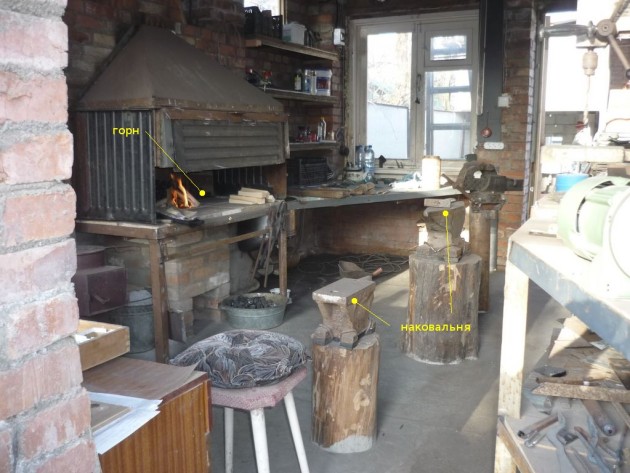
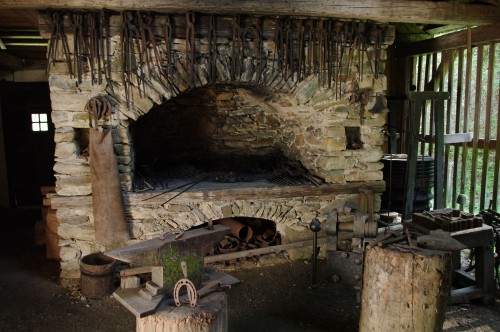
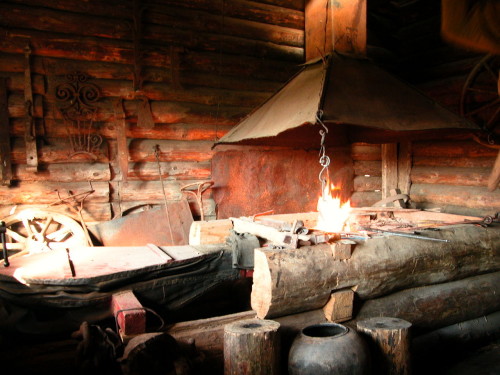
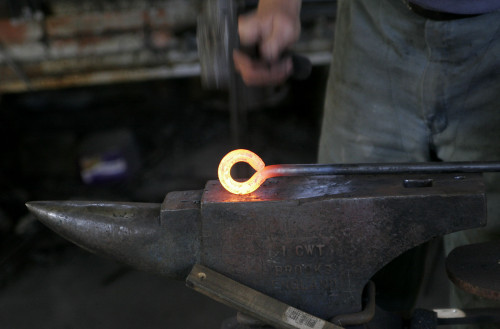
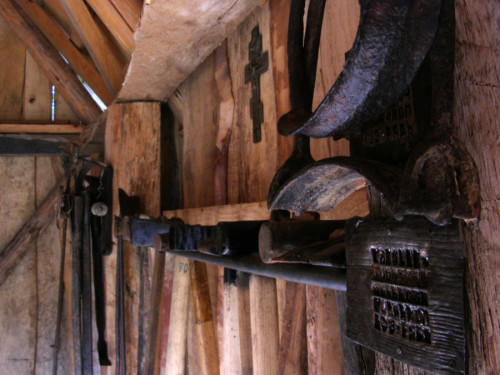












 Start a discussion ...
Start a discussion ...